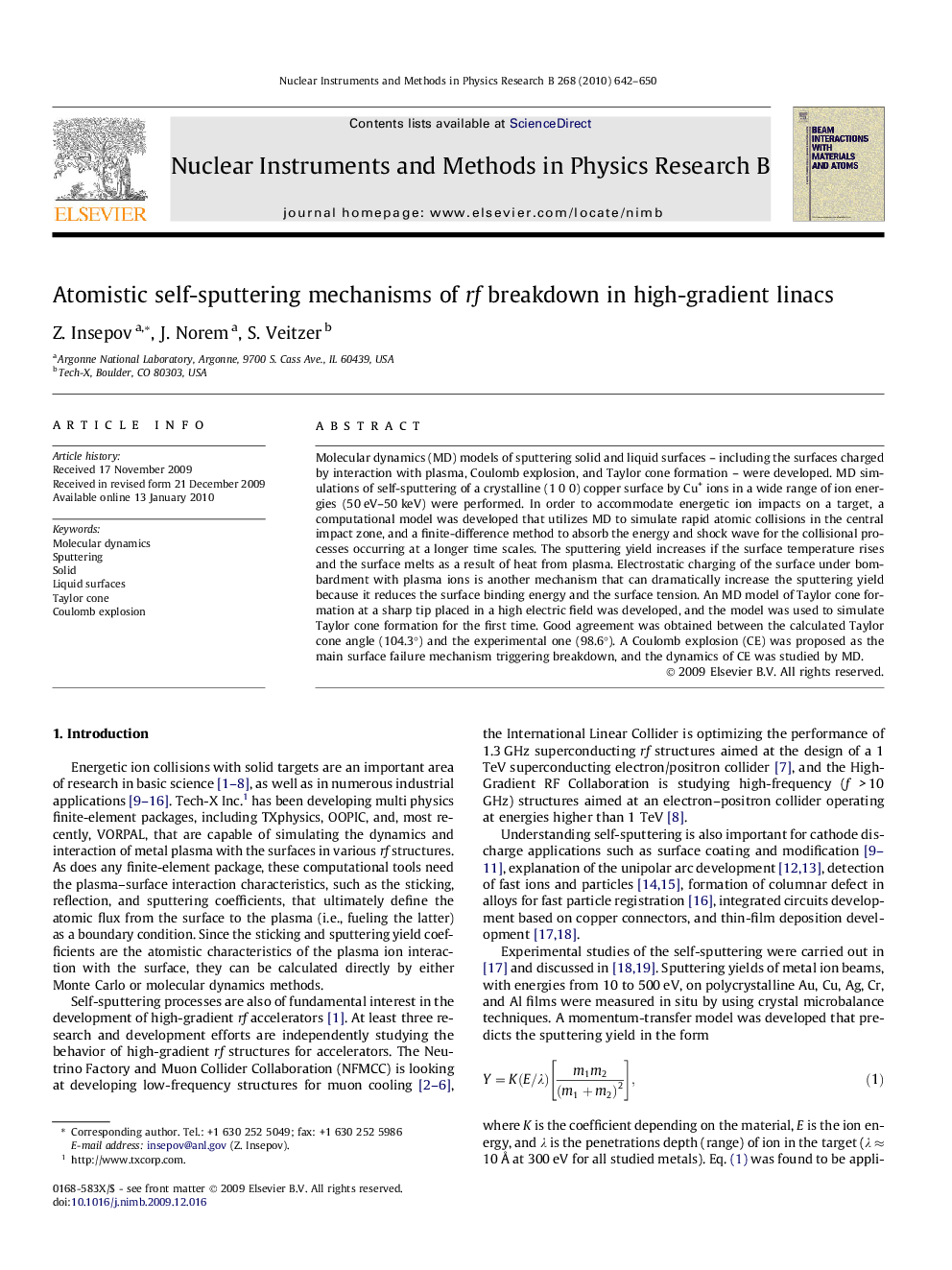| کد مقاله | کد نشریه | سال انتشار | مقاله انگلیسی | نسخه تمام متن |
|---|---|---|---|---|
| 1681930 | 1010453 | 2010 | 9 صفحه PDF | دانلود رایگان |
عنوان انگلیسی مقاله ISI
Atomistic self-sputtering mechanisms of rf breakdown in high-gradient linacs
دانلود مقاله + سفارش ترجمه
دانلود مقاله ISI انگلیسی
رایگان برای ایرانیان
کلمات کلیدی
موضوعات مرتبط
مهندسی و علوم پایه
مهندسی مواد
سطوح، پوششها و فیلمها
پیش نمایش صفحه اول مقاله

چکیده انگلیسی
Molecular dynamics (MD) models of sputtering solid and liquid surfaces - including the surfaces charged by interaction with plasma, Coulomb explosion, and Taylor cone formation - were developed. MD simulations of self-sputtering of a crystalline (1 0 0) copper surface by Cu+ ions in a wide range of ion energies (50 eV-50 keV) were performed. In order to accommodate energetic ion impacts on a target, a computational model was developed that utilizes MD to simulate rapid atomic collisions in the central impact zone, and a finite-difference method to absorb the energy and shock wave for the collisional processes occurring at a longer time scales. The sputtering yield increases if the surface temperature rises and the surface melts as a result of heat from plasma. Electrostatic charging of the surface under bombardment with plasma ions is another mechanism that can dramatically increase the sputtering yield because it reduces the surface binding energy and the surface tension. An MD model of Taylor cone formation at a sharp tip placed in a high electric field was developed, and the model was used to simulate Taylor cone formation for the first time. Good agreement was obtained between the calculated Taylor cone angle (104.3°) and the experimental one (98.6°). A Coulomb explosion (CE) was proposed as the main surface failure mechanism triggering breakdown, and the dynamics of CE was studied by MD.
ناشر
Database: Elsevier - ScienceDirect (ساینس دایرکت)
Journal: Nuclear Instruments and Methods in Physics Research Section B: Beam Interactions with Materials and Atoms - Volume 268, Issue 6, 15 March 2010, Pages 642-650
Journal: Nuclear Instruments and Methods in Physics Research Section B: Beam Interactions with Materials and Atoms - Volume 268, Issue 6, 15 March 2010, Pages 642-650
نویسندگان
Z. Insepov, J. Norem, S. Veitzer,